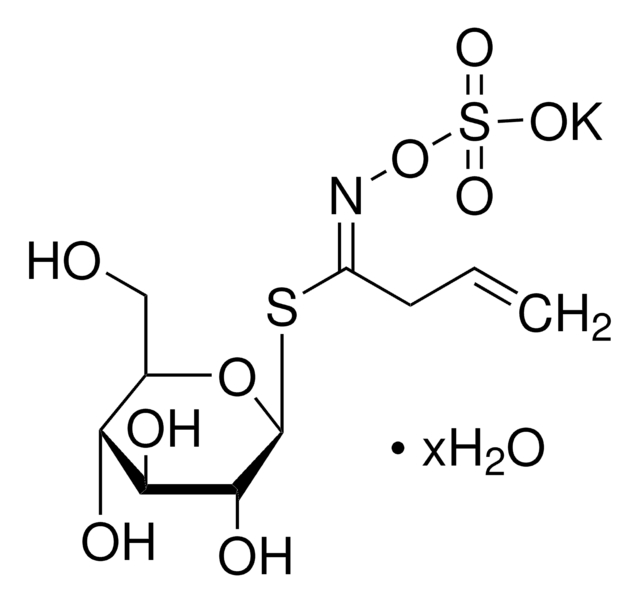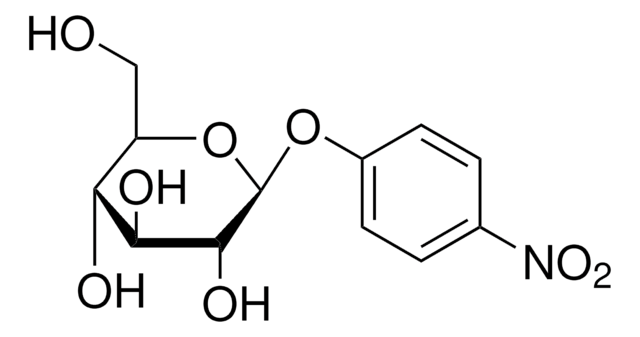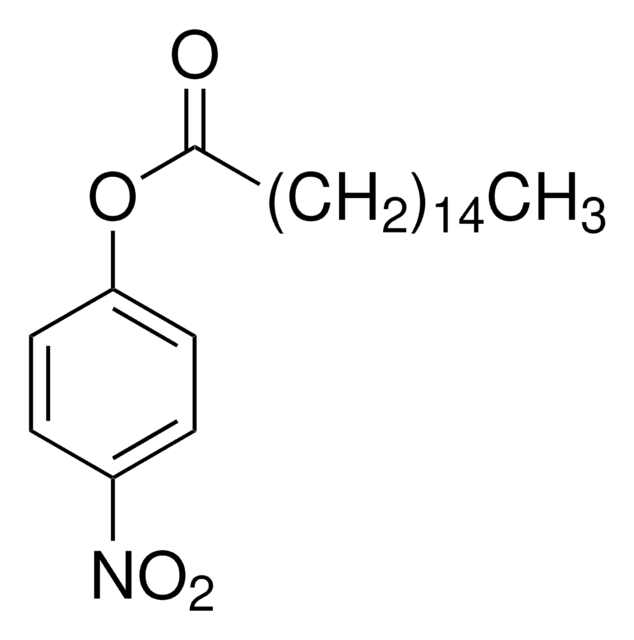1048
4-Nitrophenol
spectrophotometric grade
Synonym(s):
p-Nitrophenol
About This Item
Recommended Products
grade
spectrophotometric grade
Quality Level
vapor pressure
0.6 mmHg ( 120 °C)
form
powder
autoignition temp.
541 °F
technique(s)
UV/Vis spectroscopy: suitable
bp
279 °C (lit.)
mp
110-115 °C (lit.)
solubility
ethanol: 95%, clear, dark yellow (100 mg/mL)
SMILES string
O=N(C1=CC=C(O)C=C1)=O
InChI
1S/C6H5NO3/c8-6-3-1-5(2-4-6)7(9)10/h1-4,8H
InChI key
BTJIUGUIPKRLHP-UHFFFAOYSA-N
Gene Information
human ... UGT1A4(54657)
Looking for similar products? Visit Product Comparison Guide
Related Categories
Application
- Spectroscopic monitoring of polyurethane-based nanocomposite as a potential catalyst for the reduction of dyes.: This research explores the use of a polyurethane-based nanocomposite incorporating 4-Nitrophenol for spectroscopic monitoring and catalysis. The study demonstrates its effectiveness in reducing dye concentrations, providing a valuable tool for environmental cleanup and chemical processing industries (Alam K et al., 2024).
- Silica@poly(chitosan-N-isopropylacrylamide-methacrylic acid) microgels: Extraction of palladium (II) ions and in situ formation of palladium nanoparticles for pollutant reduction.: Discusses the synthesis and application of innovative microgels that utilize 4-Nitrophenol in processes for extracting palladium ions and reducing pollutants. This highlights its utility in heavy metal remediation and nanoparticle synthesis, relevant for environmental and materials science (Alzahrani AYA et al., 2024).
- Reaction mechanisms of chlorinated disinfection byproducts formed from nitrophenol compounds with different structures during chlor(am)ination and UV/post-chlor(am)ination.: Examines how 4-Nitrophenol and similar compounds react under different water treatment processes, providing insights into the formation and control of disinfection byproducts. This is crucial for improving water treatment safety and effectiveness (Prasad Singh R et al., 2024).
- Comprehensive Studies of Adsorption Equilibrium and Kinetics for Selected Aromatic Organic Compounds on Activated Carbon.: This study provides a detailed analysis of 4-Nitrophenol adsorption on activated carbon, offering valuable data on its behavior in water treatment systems. The findings are critical for designing more efficient adsorption processes to remove contaminants from water (Marczewski AW et al., 2024).
Signal Word
Warning
Hazard Statements
Precautionary Statements
Hazard Classifications
Acute Tox. 4 Dermal - Acute Tox. 4 Inhalation - Acute Tox. 4 Oral - STOT RE 2 Oral
Target Organs
Kidney,Liver
Storage Class Code
6.1C - Combustible acute toxic Cat.3 / toxic compounds or compounds which causing chronic effects
WGK
WGK 2
Flash Point(F)
336.2 °F - closed cup
Flash Point(C)
169.0 °C - closed cup
Personal Protective Equipment
Choose from one of the most recent versions:
Already Own This Product?
Find documentation for the products that you have recently purchased in the Document Library.
Customers Also Viewed
Our team of scientists has experience in all areas of research including Life Science, Material Science, Chemical Synthesis, Chromatography, Analytical and many others.
Contact Technical Service








